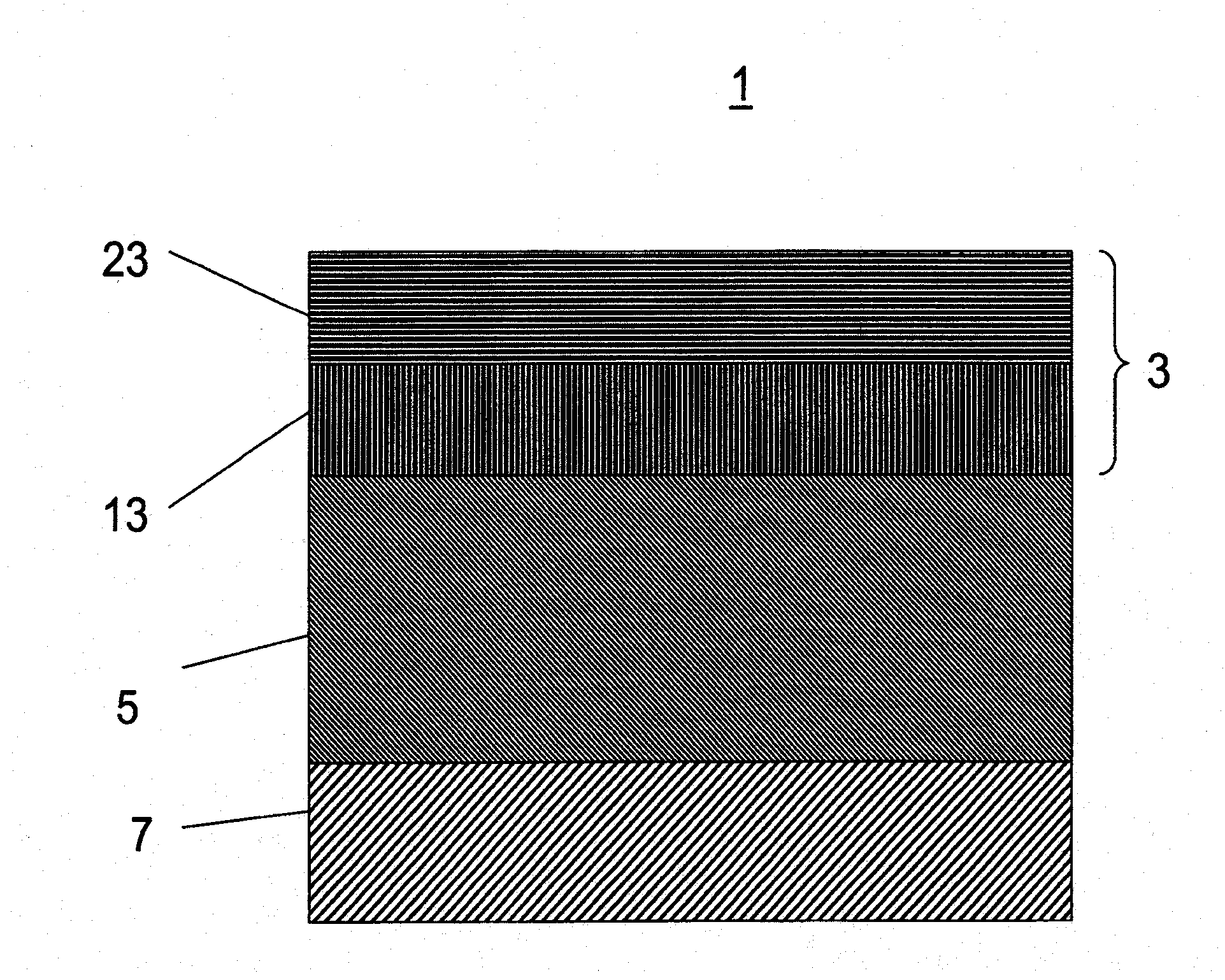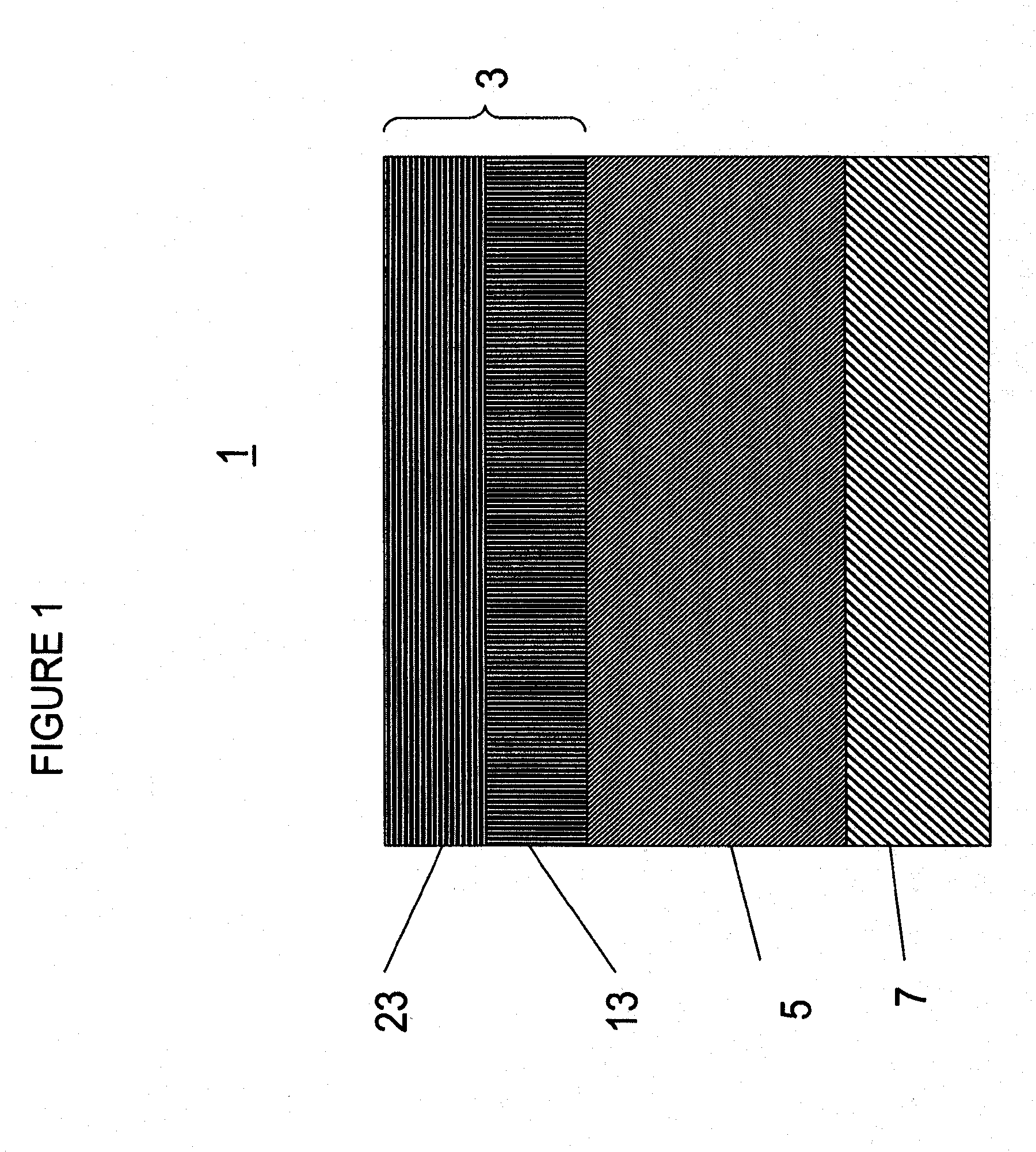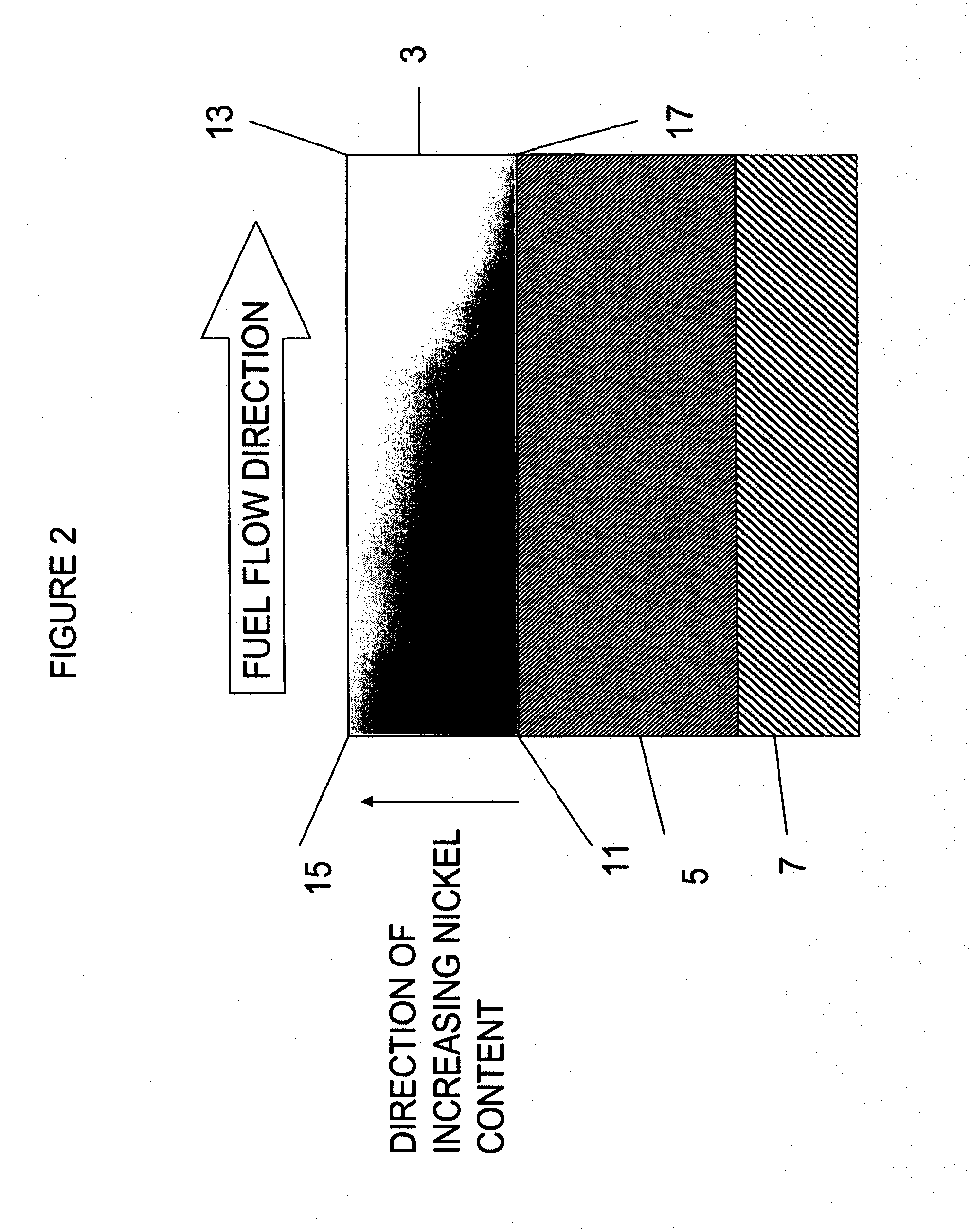Internal reforming anode for solid oxide fuel cells
an anode and solid oxide technology, applied in the field of fuel cell components, can solve the problems of mechanical damage at the anode/electrolyte interface, and affecting the stack performance of the stack,
- Summary
- Abstract
- Description
- Claims
- Application Information
AI Technical Summary
Problems solved by technology
Method used
Image
Examples
Embodiment Construction
In one embodiment of the invention, an anode electrode for a solid oxide fuel cell allows for the direct internal reforming of hydrocarbon fuels on the anode and reliable operation under fuel starvation conditions. The internal reforming anode will eliminate the need for a pre-reformer or an external reformer, thus significantly reducing the cost. The solid oxide fuel cell (SOFC) comprises a cathode electrode, a solid oxide electrolyte, and an anode electrode comprising a first portion and a second portion, such that the first portion is located between the electrolyte and the second portion. The anode electrode comprises a cermet comprising a nickel containing phase and a ceramic phase. The first portion of the anode electrode is a cermet comprising a nickel containing phase and a ceramic phase with a lower porosity and a lower ratio of the nickel containing phase to the ceramic phase than the second portion of the anode electrode.
In one embodiment, the second portion further compr...
PUM
| Property | Measurement | Unit |
|---|---|---|
| weight percent | aaaaa | aaaaa |
| weight percent | aaaaa | aaaaa |
| weight percent | aaaaa | aaaaa |
Abstract
Description
Claims
Application Information
 Login to View More
Login to View More - R&D
- Intellectual Property
- Life Sciences
- Materials
- Tech Scout
- Unparalleled Data Quality
- Higher Quality Content
- 60% Fewer Hallucinations
Browse by: Latest US Patents, China's latest patents, Technical Efficacy Thesaurus, Application Domain, Technology Topic, Popular Technical Reports.
© 2025 PatSnap. All rights reserved.Legal|Privacy policy|Modern Slavery Act Transparency Statement|Sitemap|About US| Contact US: help@patsnap.com



